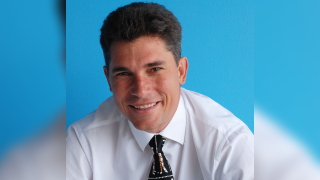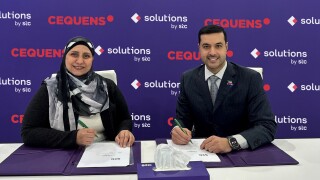In the last couple of years, it has opened several next-generation cables for business along both the Atlantic and Pacific coasts that significantly boost communications in South America, and enhance connectivity with the US, Europe and beyond. Rafael Arranz, COO of the cable business at Telxius, explained how this is preparing the Americas for the digital future.
What has Telxius been doing recently in the submarine cable market in Latin America, and how does its current infrastructure look?
We have a modern and diverse offer of submarine cables in the region, fulfilling the needs of customers that require high levels of capacity and offering redundancy. To further grow our portfolio and stay ahead of the game, we have certainly not sat still in the past couple of years, despite the challenges of the pandemic.
Last year, for example, Telxius opened the 2,000km Tannat subsea cable for business, connecting the city of Santos in southern Brazil with Las Toninas in eastern Argentina. This completes the most modern and diverse connectivity route on the Atlantic coast between main hubs in South America and the US, adding to the Brusa cable between Virginia Beach in the US and Rio de Janeiro, and the Junior cable that links onwards to Santos.
Moving to the other side of the continent, on the Pacific coast, we launched the Mistral submarine cable last August. The 7,300km cable offers 132Tbps of potential capacity and it is the first subsea cable in the last 20 years to connect Puerto San Jose in Guatemala with Valparaiso in Chile, with further landing points at Salinas in Ecuador, Lurin in Peru and Arica in Chile.
Telxius is always seeking to drive digital transformation with the breadth of its networks. In all, the company’s network of submarine cables currently spans nearly 94,000km across the globe, making it one of the world’s largest, and including 93 points of presence and 25 landing stations in 23 countries.
How do such initiatives help boost communications for the Latin American market and users in the region?
Our latest network developments provide essential infrastructure to propel Latin America forward on the communications front, powering both enterprises and people to fully participate in today’s global economy. Having bolstered connectivity along both the Atlantic and Pacific coasts, these next-generation subsea cables significantly enhance redundancy for our SAm-1 cable, a 25,000km subsea fibre-optic cable ring around Latin America.
Brusa links up with the global submarine ecosystem through its landing point at Virginia Beach, where it connects directly to the Dunant and Marea cables, reaching all the way across the Atlantic to respective locations in Paris and Sopelana in northern Spain.
Furthermore, Telxius offers direct backhaul from the Virginia Beach CLS campus, where Marea, Brusa and Dunant land, to the world’s data centre capital, Ashburn, as well as having connections to other key data centre areas in Richmond and Phoenix.
In combination, therefore, the cables connect Latin America up with the global network, while providing low-latency networks for content players, enterprises and third-party operators – and, ultimately, boosting the development of the global economy.
What would you identify as the main challenges and opportunities for carriers in that region at the moment?
The COVID-19 crisis has accelerated the need for digitalisation and transformation among companies all over the world, and Latin America is no exception. A vast increase has been seen in the number of people working from home and conducting meetings online, while the need has been recognised more than ever for robust digital infrastructure and services to meet requirements when the world experiences emergencies.
Although this poses a sizeable challenge for carriers in terms of the need to ramp up capacity faster, it also presents big opportunities, such as the opening of new digital channels to replace face-to-face communications. In addition, it has multiplied the number of digital products and services being brought to market, transforming the way we live and boosting data consumption.
Robust cable networks are, meanwhile, crucial at challenging times like those experienced during the pandemic, through their ability to respond to change, and at the same time to meet the needs of the future.
At Telxius, we are ready to capture this opportunity, preparing the road ahead to walk hand in hand with our customers and fuel their business growth through the development of advanced infrastructure and services. In fact, we have been able to notably increase the provision of capacity on our network over the years. Additionally, we are handling the significant growth in IP traffic.
How does the communications hub that Telxius has established in Bilbao, Spain, help to leverage the benefits of the company’s subsea cable systems for customers?
The Derio Communications Hub is in a strategic location in northern Spain near Bilbao, just a few kilometres from the Marea subsea cable arriving from the US. The idea of the hub, which operates a carrier-neutral model, is to respond to modern needs and offer a one-stop shop for a broad array of cable services.
The facility, which features Tier III specifications, is also interconnection-rich and links onwards to key international communications hubs including Marseille, Paris, London, Frankfurt and Madrid – which is growing in importance as a gateway for traffic arriving from Latin America. In fact, Telxius developed a terrestrial backhaul from Derio to Madrid and Paris.
The hub has attracted significant attention in the couple of years since its launch, bringing in some major customers and connecting key global cables. Most recently, it welcomed Colt Technology Services, and has connected up Google’s Grace Hopper subsea cable via the Sopelana landing station, allowing Google, its customers and users access to high-quality colocation, capacity and IP services, and giving it a pathway onwards into Europe.
Over time, these developments are all serving to strengthen the richness of communications and interconnection options for companies, unlocking new opportunities for multiple players around the world.
In what other ways is Telxius improving its network to deal with capacity demands and support the latest wave of innovative services?
We recently revealed that we had deployed 400Gbps Ethernet throughout our network via technology provided by Ciena and Infinera. This will help support the growing take-up of cloud-based and data-hungry services like video streaming and online gaming, as well as paving the way for handling the upcoming demands of new services supported by 5G, AI and machine learning, which are only set to grow in the future.
Telxius is very well positioned in offering this level of Ethernet technology via both its transatlantic routes and those between Latin America and the US, including on the Marea, Dunant, Brusa, Junior, Tannat and Mistral next-generation cables.
The system uses Ciena’s GeoMesh Extreme technology, which leverages WaveLogic 5 Extreme coherent optics to offer new levels of capacity and fibre efficiencies. Together, Ciena’s technologies enable programmable and scalable networks, supporting companies like Telxius that are looking to offer innovative and up-to-date services.
How does Telxius see 2022 and beyond for its business and market positioning, and what are its next steps going forward?
The vision of Telxius is to continue growing its business in Latin America and elsewhere through close cooperation with customers, driving network use and exploring opportunities to expand its portfolio and infrastructure.
We have already seen how such approaches can boost connectivity around the world and aid the spread of reliable, secure and efficient digital services through our activities in recent years to grow our cable network and develop communications hubs.
With these aims in mind, Telxius has a lot to look forward to both this year and in the long-term future. We want to carry on providing flexible services to customers, contribute to agreements for collaboration and build relationships based on trust within the industry, as well as facilitating global communications for a wide array of industries.









